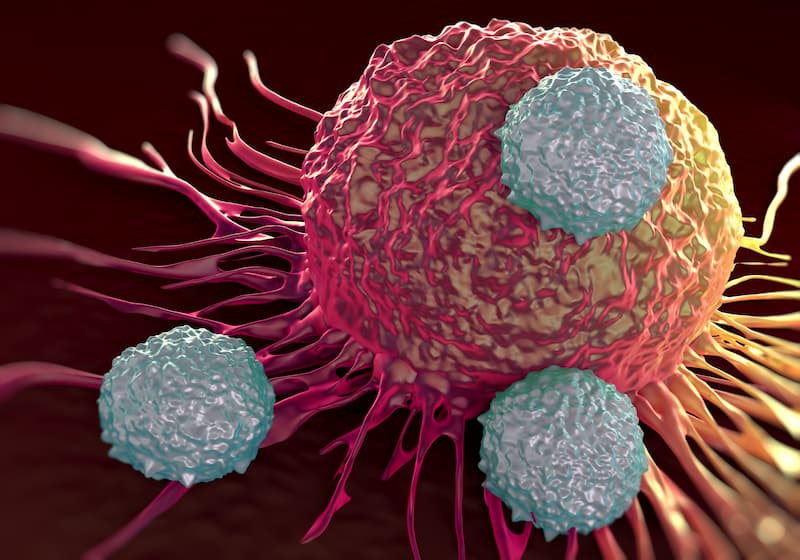FDA Accepts BLA for Subcutaneous Nivolumab in Solid Tumor Indications
Data from the CheckMate-67T trial support the biologics license application for subcutaneous nivolumab in multiple solid tumors.
Supporting findings for the BLA came from the phase 3 CheckMate-67T trial (NCT04810078), in which investigators compared treatment with intravenous vs subcutaneous nivolumab in previously treated patients with advanced or metastatic clear cell renal cell carcinoma (RCC).

The FDA has accepted a biologics license application (BLA) for a subcutaneous formulation including nivolumab (Opdivo) and hyaluronidase (rHuPH20) for adult patients with solid tumors for which standard intravenous nivolumab has already received approval, according to a press release from the developers, Bristol Myers Squibb.1
If approved, patients would be eligible to receive subcutaneous nivolumab as monotherapy, monotherapy maintenance after receiving prior nivolumab plus ipilimumab (Yervoy), or as part of a combination regimen including chemotherapy or cabozantinib (Cabometyx). The regulatory agency has set a Prescription Drug User Fee Act date of February 28, 2025, for its decision on approving the subcutaneous formulation of the agent.
(Editor's Note: As of May 21, 2024, the FDA updated the Prescription Drug User Fee Act date for subcutaneous nivolumab to December 29, 2024.)2
“We believe subcutaneous nivolumab has the potential to make a significant difference in the lives of patients, which is reinforced by the FDA’s acceptance of our application,” Gina Fusaro, PhD, vice president and global program lead at Bristol Myers Squibb, said in the press release.1 “[Nivolumab] is a foundational PD-1 inhibitor approved for many different types of cancer, and our continued investment in research that puts patients first remains a priority. If approved by the FDA, the subcutaneous administration of nivolumab would provide patients and their physicians with a new option that delivers the same well-known benefits as [intravenous nivolumab] but with the improved convenience of an injection administered in 3-to-5 minutes rather than a 30-to-60-minute infusion.”
Supporting findings for the BLA came from the phase 3 CheckMate-67T trial (NCT04810078), in which investigators compared treatment with intravenous vs subcutaneous nivolumab in previously treated patients with advanced or metastatic clear cell renal cell carcinoma (RCC). Updated findings from the CheckMate-67T trial were presented at the 2024 Genitourinary Cancers Symposium.
In the CheckMate-67T trial, 495 patients were randomly assigned to receive either subcutaneous (n = 248) or intravenous (n = 247) nivolumab. ORR was a key secondary end point of the trial.
Regarding the coprimary end point of time-averaged nivolumab serum concentration over 28 days (Cavgd28), treatment with subcutaneous nivolumab demonstrated noninferiority compared with the intravenous formulation with a geometric mean ratio of 2.098 (90% CI, 2.001-2.200).3 Additionally, the subcutaneous formulation exhibited noninferiority with respect to the coprimary end point of trough serum concentration at steady state (Cminss) with a geometric mean ratio of 1.774 (90% CI, 1.633-1.927).
The objective response rate (ORR) was 24.2% with subcutaneous nivolumab vs 18.2% with the intravenous formulation (relative risk, 1.33; 95% CI, 0.94-1.87). Additionally, the median progression-free survival according to blinded independent central review was 7.23 months vs 5.65 months, respectively.
Grade 3/4 adverse effects (AEs) occurred in 35.2% of patients in the subcutaneous arm vs 40.8% of those in the intravenous arm. Additionally, 9.7% and 14.7% of patients in each respective arm had treatment-related AEs, 21.1% and 22.9% had serious AEs, and 6.5% and 6.5% experienced treatment-related serious AEs.
Investigators concluded that the safety profile of subcutaneous nivolumab was comparable with prior reports of the intravenous formulation.
“The data from CheckMate-67T with the subcutaneous formulation of nivolumab co-formulated with recombinant human hyaluronidase represent a groundbreaking advancement in oncology research for physicians and our patients,” Saby George, MD, FACP, a professor of Oncology and Medicine and the director of Network Clinical Trials in the Department of Medicine at Roswell Park Comprehensive Cancer Center said in a press release about these data.3
“Having the option to administer immunotherapy subcutaneously could undoubtedly reduce the treatment burden that patients diagnosed with cancer currently [have], as well as help maximize efficiencies within healthcare systems. As it stands, intravenous immunotherapy infusion can take precious time, which we know is an important commodity for patients and the doctors who treat them. That’s why these results indicating noninferiority with subcutaneous nivolumab have the potential to be practice-changing and to improve patients’ treatment experience with one injection that can be given in under five minutes and, in some cases, outside of the infusion center,” George concluded.
References
- U.S. Food and Drug Administration accepts Bristol Myers Squibb’s application for subcutaneous nivolumab (nivolumab and hyaluronidase). News release. Bristol Myers Squibb. May 6, 2024. Accessed May 6, 2024. https://bit.ly/3JL8yY1
- Bristol Myers Squibb announces updated action date by the U.S. Food and Drug Administration for subcutaneous nivolumab (nivolumab and hyaluronidase). News release. Bristol Myers Squibb. May 21, 2024. Accessed May 21, 2024. https://tinyurl.com/3emkwdk2
- Subcutaneous nivolumab (nivolumab and hyaluronidase) shows noninferiority compared to intravenous Opdivo (nivolumab) in advanced or metastatic clear cell renal cell carcinoma in CheckMate -67T trial. News release. Bristol Myers Squibb. January 27, 2024. Accessed May 6, 2024. https://bit.ly/4dvCMvQ
Newsletter
Stay up to date on recent advances in the multidisciplinary approach to cancer.
Elevating the Quality of Cancer Care Via Cross-Department Collaboration
Experts from Sibley Memorial Hospital discuss how multidisciplinary work has enhanced outcomes such as survival and resource use at their institution.
Oncologists Reflect on Pandemic's Lasting Impact on Cancer Care
Hear from leading cancer experts about the lasting impact the COVID-19 pandemic has left on clinical practice.